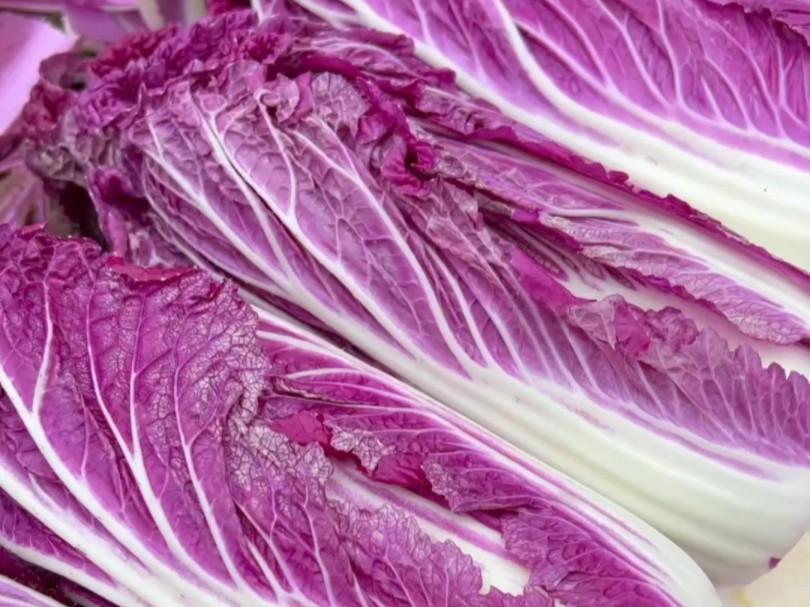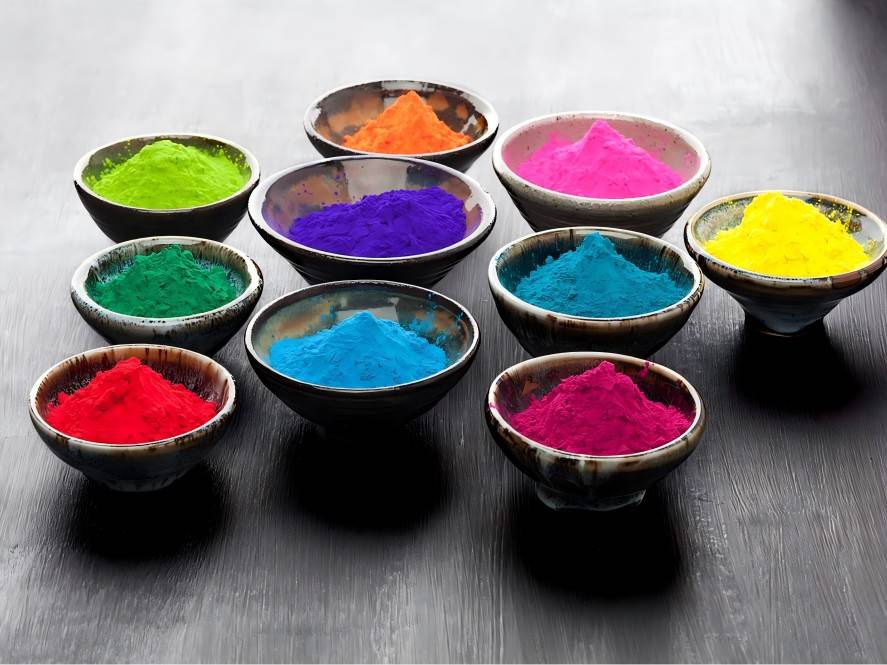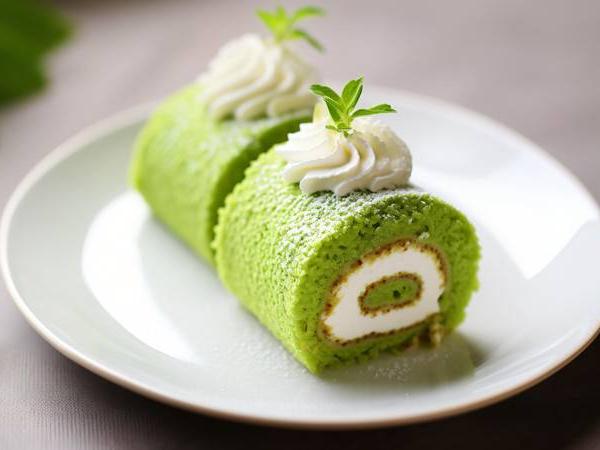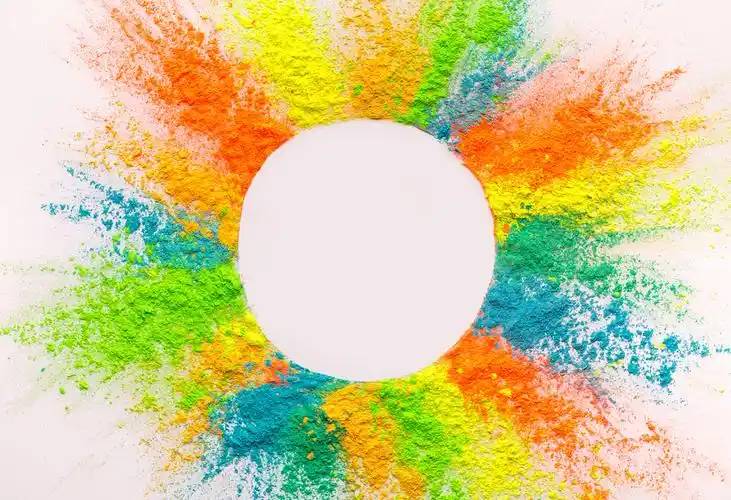Study on the Active Ingredients in Anthocyanin Natural Colors
Anthocyanin is a type of natural water-soluble pigment widely found in plants. It is also the main coloring substance in plants, giving them colors such as red, blue, or purple. Anthocyanin is a type of polyphenolic compound formed by the anthocyanin base (anthocyanin) being bound to one or more molecules of monosaccharides and disaccharides via glycosidic bonds. It has physiological functions such as anti-oxidation[1], anti-mutation[2] and prevention of cardiovascular disease[3]. It is a natural active ingredient with great development potential that can be used in health foods, medicine, cosmetics and other fields.
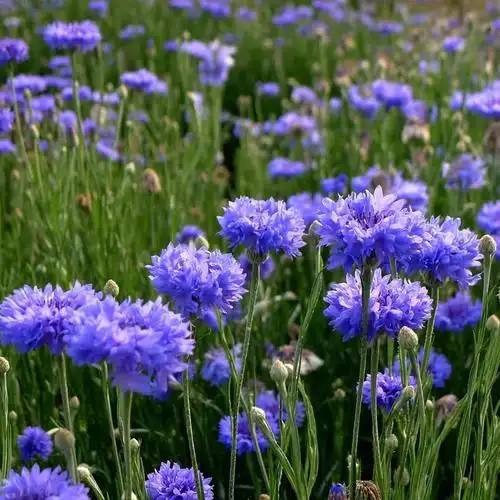
The basic structure of the anthocyanin group (anthocyanin) is 3, 5, 7 - trihydroxy - 2 - phenylbenzopyran, and there are currently more than 20 known types. Cyanidin, pelargonidin, peonidin, malvidin, petunidin and delphinidin are the six most common anthocyanins in plants. In addition, due to the instability of anthocyanin, the glycosyl groups and hydroxyl groups in anthocyanin can form relatively stable acylated anthocyanins through ester bonds with one or more molecules of organic acids such as aromatic acids and fatty acids[4]. Due to the different types, quantities and positions of sugars and organic acids attached to the anthocyanin molecule, a variety of anthocyanins can be formed in plants, and the most common are the six anthocyanins of cyanidin, geranin, delphinidin, peonidin, malvinidin, petunidin and mallowidin. This article reviews the anthocyanin components in natural anthocyanin sources such as fruits, vegetables, potatoes, beans and cereals, with a view to providing a reference for the intake of anthocyanins through the diet.
1 Anthocyanin components in fruits
1. 1 Grapes
Grapes are the most commonly consumed fruit in China, and can be eaten fresh (table grapes) or made into wine (wine grapes). Grapes with purple or red skins are an important source of anthocyanins for the human body through dietary intake. The skin, flesh, seeds and other organs of grapes are rich in anthocyanins. There are many types of anthocyanins in grapes, and there are differences between varieties, but they are mainly derivatives formed with delphinidin, petunidin, peonidin and malvidin as the base group, and the malvidin glycoside is the main Anthocyanin component in most grape varieties. Luan Liying et al. [5] used high performance liquid chromatography-mass spectrometry to analyze the Anthocyanin components in the skins of the wine grapes Cabernet Sauvignon and Yunnan 73. The results showed that Cabernet Sauvignon skins contained 12 types of anthocyanins, and 15 types of anthocyanins were detected in the skins of the domestically bred variety Yanjin 73. It was also pointed out that abscisic acid treatment significantly increased the total amount of two types of skin anthocyanins, and that the content of different types of anthocyanins was increased to varying degrees, thereby promoting fruit coloring.
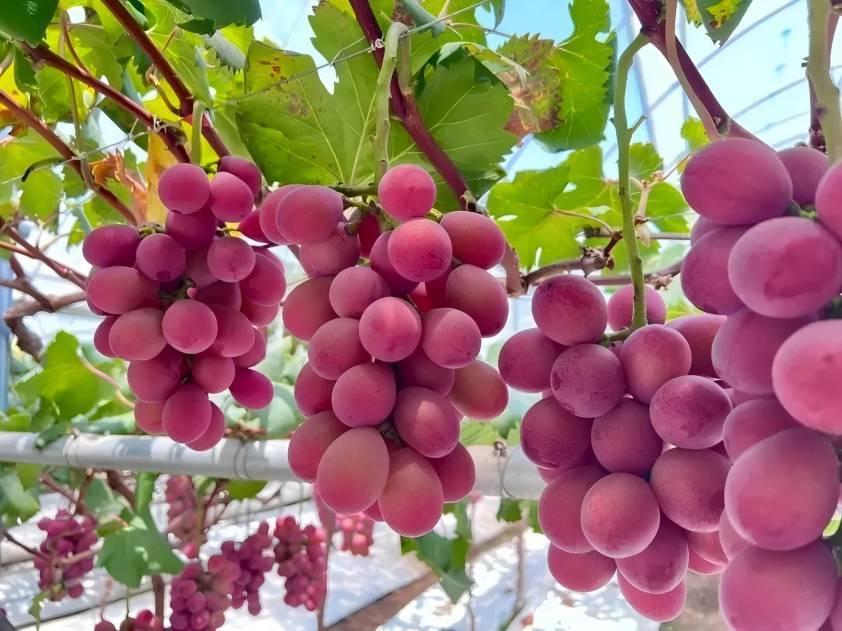
Zhang Lei et al. [6] also detected 12 types of Anthocyanin in the skin of the table grape “Beauty Finger”, but the types of Anthocyanin were different from those in the tobacco 73. They pointed out that the double-layer black paper bag treatment can significantly promote the synthesis of Anthocyanin in the skin and the expression of related genes, thereby better coloring the grape skin. Deng Jiehong et al. [7] isolated and detected the anthocyanins in the skin of prickly grapes. Two anthocyanin components, namely, malvinidin and peonidin, were obtained from the hydrolysate of the prickly grape skin anthocyanin, and five anthocyanin components were isolated from the prickly grape skin pigment, four of which are 3,5-disaccharides, one is a 3-saccharide and two are acylated anthocyanins. The type and content of anthocyanins also change during the fermentation of grapes into wine, generally showing a downward trend. Cabernet Sauvignon skins before fermentation contain 12 types of anthocyanins[5], and the fermented wine contains 9 types of anthocyanins, mainly delphinidin 3-O-glucoside and delphinidin 3-O-(6-O-acetyl)glucoside[8].
1. 2 Blueberry
Blueberry anthocyanins are mainly based on delphinidin, cyanidin and petunidin structures, with galactose, glucose and arabinose glycosides bound at different sites. Liu Zhigang et al. [9] identified 13 anthocyanins in the anthocyanin extract of Guizhou blueberries and predicted that it contains cornflower 3-O-glucoside, delphinidin 3-galactoside, delphinidin 3-arabinoside, Petunidin 3-arabinoside, Malvinidin 3-galactoside, Malvinidin 3-glucoside and Malvinidin 3-arabinoside. Liu Yong et al. [10] found 12 Anthocyanins in the Anthocyanin extract of Nanjing blueberries.
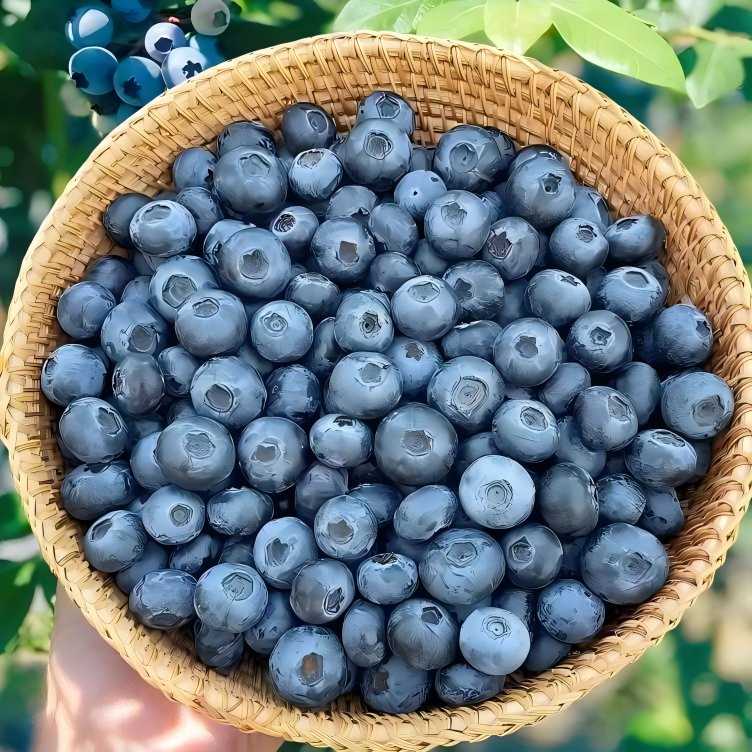
1. 3 Mulberry
Mulberry Anthocyanin is mainly a derivative of cyanidin and pelargonidin, and there are differences between varieties. Zou Tangbin et al. [11] found 8 Anthocyanin in Guangzhou mulberry, mainly composed of cyanidin, delphinidin and pelargonidin and other bases combined with glucose and rutinoside. including 4 types of delphinidin derivatives such as delphinidin 3-(2G-glucorhamnoside), delphinidin-3,5-diglucoside, delphinidin-3-glucoside and delphinidin-3-rutinoside, delphinidin-3-rutinoside, delphinidin-3-glucoside, and two delphinidin derivatives, namely pelargonidin-3-rutinoside and pelargonidin-3-glucoside, as well as two geranin derivatives, namely geranin-3-glucoside and geranin-3-rutinoside. Yang Ling et al. [12] found that Xinjiang medlar Anthocyanin does not contain delphinidin derivatives, but only contains 4 types of Anthocyanin, including cornflower-3-rutinoside, pelargonium-3-rutinoside, and 4 other Anthocyanin components such as cornflower - 3 - glucoside and geranium - 3 - glucoside. Compared with the Xinjiang mulberry, the Anhui wild mulberry contains only 3 Anthocyanin components, lacking geranium - 3 - rutinoside [13].
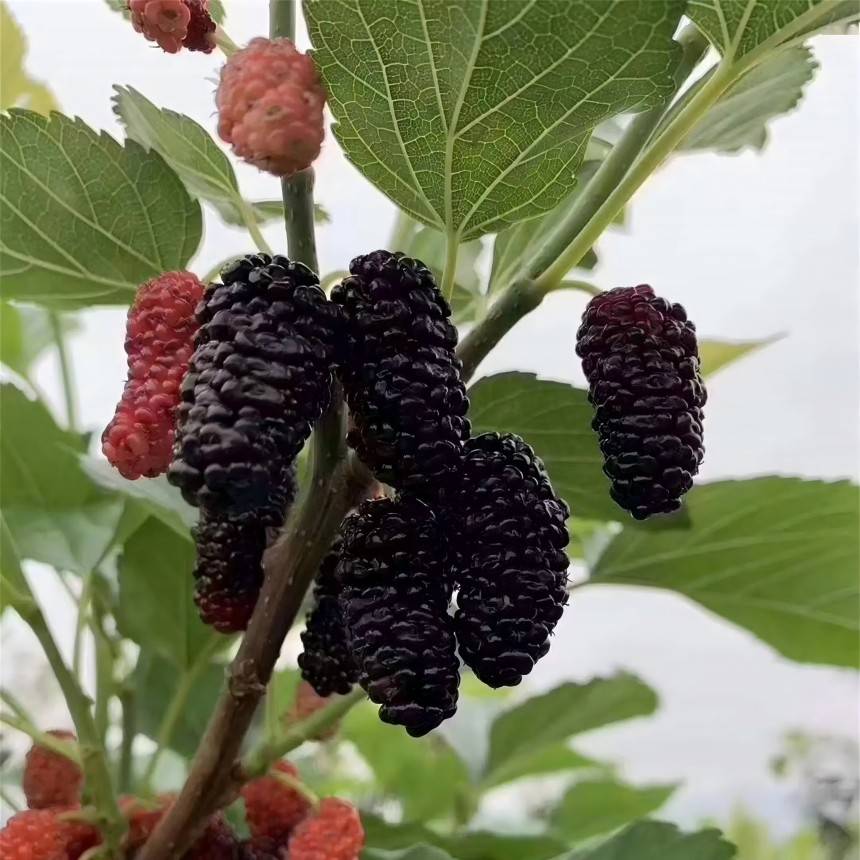
1. 4 Other
Strawberry fruit contains about 9 types of anthocyanins, but the types, content and proportions of anthocyanins vary among different varieties. Among these, delphinidin-3-glucoside is the main anthocyanin component, followed by delphinidin-3-rutinoside, delphinidin-3-glucopyranosyl-propionate, cyanidin-3-glucoside and delphinidin-3-methylglucopyranoside [14]. The main components of the anthocyanin in the camphor fruit are paeoniflorin 3-arabinoside, paeoniflorin 3-xyloside and paeoniflorin 3-glucoside or their derivatives [15].
2 Anthocyanin components in vegetables
Vegetables are also a major source of natural anthocyanins. Anthocyanins in the fresh leaves of red leaf mustard, purple cabbage, red savoy cabbage, purple cabbage and purple Brussels sprouts are mainly derivatives of cyanidin, petunidin and delphinidin, with cyanidin anthocyanins being the most abundant anthocyanin components. Anthocyanins in red leaf mustard, purple Chinese cabbage, purple pak choi and red savoy cabbage are mainly delphinidin-3-glucoside acylated with coumalic acid, malonic acid and ferulic acid. The main anthocyanin in purple cabbage is the acylated delphinidin-3-gentiobioside, while the main anthocyanins in red leaf mustard, purple cabbage, purple pak choi and red savoy cabbage are the acylated delphinidin-3-gentiobioside-5-glucoside and the unacylated delphinidin-3-rutinoside-5-glucoside, cornflower-3-p-coumaroyl-sophoroside-5-glucoside [16]. Purple cabbage contains 15 anthocyanins, mainly composed of 9 highly acylated cornflower anthocyanins and 2 non-acylated monosaccharide and disaccharide cornflowers, as well as a small amount of non-acylated monosaccharide and disaccharide delphinidin [17]. There are four main anthocyanins in red-skinned white-heart radish, all of which have pelargonidin-3-rutinoside-5-glucoside as their basic structure. respectively 3-[6-(p-coumaroyl)-L-glucopyranosyl (2→1)-glucoside] -5-D-glucopyranosyl geranin, 3-[6-(feruloyl)-L-glucopyranosyl (2→1)-glucoside] -5-D-glucopyranosyl glycoside pelargonidin, 3-[6-(p-coumaroyl)-L-glucopyranosyl(2→1)-glucoside]-5-[ (6-malonyl)-D-glucopyranoside] pelargonidin and 3-[6-(feruloyl)-L-glucosyl(2→1)-glucoside]-5[-(6- propionyl) -D-glucopyranoside] pelargonidin [18].
3 Anthocyanin components in tubers
Potatoes are a common food crop and a major source of natural anthocyanins. Sun Mengru et al. [19] used liquid chromatography-mass spectrometry to determine the anthocyanin components in the salt-tolerant purple sweet potato variety Z103. They found that it contained 12 anthocyanins, mainly cyanidin and peonidin anthocyanins acylated with aromatic acids [20]. Zhang Chao et al. [21] identified the anthocyanin components in two types of colored potatoes in China, including red potatoes (2472) and purple potatoes (purple sweet potatoes). The results showed that red potatoes (2472) contain five types of anthocyanins, mainly unacylated pelargonidin glycosides and acylated pelargonidin glycosides and cyanidin 3-p-coumaroyl-rutinoside-5-glucoside, and the detection of cyanidin 3-p-coumaroyl-rutinoside-5-glucoside in potatoes for the first time. Purple potatoes (purple sweet potatoes) also contain five anthocyanins, mainly unacetylated petunidin and acetylated petunidin and malvinidin, of which petunidin-3-p-coumaroyl-rutinoside-5-glucoside is the main component. The purple potato “Black Diamond” contains seven anthocyanin components, mainly unacetylated petunidin, peonidin and acetylated delphinidin, petunidin and peonidin. Among them, petunidin-3-p-coumaroyl-rutinoside-5-glucoside is the main component of purple potato anthocyanin, and petunidin-3-glucoside was detected for the first time in potatoes [22-23].
4 Other natural sources of anthocyanins
The seed coat of black rice is rich in polyphenols, especially anthocyanins. It mainly contains three anthocyanin components: cornflower-3-glucoside, cornflower-3-rutinoside and paeoniflorin-3-glucoside [24]. A total of 14 anthocyanin compounds were identified in the blue and purple durum wheat grains, including delphinidin, cyanidin, and peony-shaped anthocyanins – hexoside and delphinidin-3-O-glucoside, as well as cyanidin-3-O-rutinoside and acetylated cyanidin-3-O-glucoside – formed by delphinidin, cyanidin, petunidin, peonidin, and malvidin [25]. Purple corn husks contain six anthocyanin components, presumably including cornflower-3-O-glucoside, geranium-3-O-glucoside, paeoniflorin-3-O-glucoside, cornflower-3-(6-malonyl-glucoside), pelargonium - 3 - (6 - malonyl - glucoside) and paeoniflorin - 3 - (6 - malonyl - glucoside) [26]. The black soybean seed coat contains six anthocyanin components, namely delphinidin - 3 - glucoside, Cyanidin-3-galactoside, cyanidin-3-glucoside, petunidin-3-glucoside, peonidin-3-glucoside, and malvinidin-3-glucoside [27].
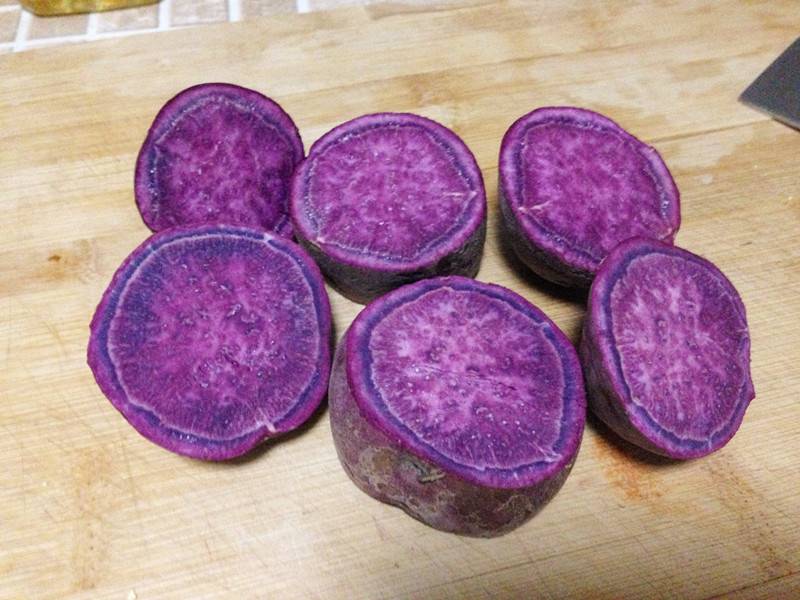
5 Conclusion
As a coloring substance in plants, anthocyanin not only imparts color, but also has various physiological functions such as anti-oxidation, anti-cancer, and prevention of cardiovascular and cerebrovascular diseases. It has extremely high value as both medicine and food, and the development and use of natural plant extracts is highly safe. Therefore, anthocyanin resources have a wider scope and prospects for development in the field of natural color development. However, anthocyanin content is generally low in crops. Bioengineering methods can be used to enrich crops with anthocyanin, such as silencing the expression of relevant inhibitory genes in the metabolic process of anthocyanin synthesis through gene silencing technology (such as RNAi silencing), or transferring relevant anthocyanin genes through transgenic technology and conducting breeding.
Reference:
[1] Jung S B , Shin J H , Kim J Y , et al. Shinzami Korean purple -fleshed sweet potato extract prevents ischaemia - reperfusion -induced liver damage in rats [ J] . Journal of the Science of Food and Agriculture , 2015 , 95 (14): 2 818-2 823.
[2]Bobe G,Wang B,Seeram N P,et al. Dietary antho -cyanin-rich tart cherry extract inhibits intestinal tumorigenesis in APC (Min) mice fed suboptimal levels of sulin- dac[J] . Journal of Agricultural and Food Chemistry ,2006, 54 (25):9 322-9 328.
[3] Krga I,Monfoulet L E,Konic -Ristic A , et al. Antho- cyanins and their gut metabolites reduce the adhesion of monocyte to TNF alpha-activated endothelial cells at physi- ologically relevant concentrations [ J] . Archives of Bio- chemistry and Biophysics ,2016 (1):236-243.
[4] Li Yingchang. Plant Anthocyanin [M] . Beijing: Chemical Industry Press, 2013: 10.
[5] Luan Liying, Zhang Zhenwen, Hui Zhumei, et al. The effect of abscisic acid treatment on the anthocyanin composition of Cabernet Sauvignon and Smoke 73 grape skins [J] . Food Science, 2014 (18): 110-114.
[6] Zhang Lei, Jia Yue, Wang Jiyuan, et al. Effect of bagging on the anthocyanin composition and expression of synthesis-related genes in the “Beauty Finger” grape [J]. Journal of Fruit Science, 2014 (6): 1032-1039.
[7] Deng Jiehong, Tan Xinghe, Wang Feng, et al. Isolation and identification of anthocyanins from the skin of prickly grapes [J]. Chinese Journal of Food Science, 2010 (1): 200-206.
[8] Wang Hua, Han Fuliang. Analysis of anthocyanin components in Cabernet Sauvignon dry red wine using HPLC [J]. Winemaking Science and Technology, 2005 (4): 81-84.
[9] Liu Zhigang, Liu Xiaoyan, Du Chao, et al. HPLC fingerprint of blueberry anthocyanin extract [J]. Chinese Journal of Experimental Pharmacology, 2015 (21): 58-61.
[10] Liu Yong, Wang Ping, Wu Yue, et al. Optimization of ultrasonic-assisted extraction process and component analysis of blueberry anthocyanin [J]. Journal of Anhui University of Science and Technology, 2014 (3): 32-36.
[11] Zou Tangbin, Ling Wenhua. Determination of anthocyanin content and analysis of types in mulberry [J]. Food Research and Development, 2013 (24): 197-200.
[12] Yang Ling, Su Yali, Chen Min. Separation and identification of anthocyanin in Xinjiang mulberry [J]. Food Science, 2012 (21): 145-148.
[13] Chen Liang, Xin Xiulan, Yuan Qipeng. Analysis of Anthocyanin Components in Wild Mulberries [J]. Food Industry Science and Technology, 2012 (15): 307-310.
[14] Luo Yun, Chen Zongling, Song Weitang, et al. Identification and analysis of the composition of anthocyanins in strawberry fruit [J] . Journal of China Agricultural University, 2014 (5): 86-94.
[15] Chu Yanliang, Wang Na. Identification of anthocyanin components and antibacterial and preservative research in Cinnamomum camphora fruit [J] . Anhui Agricultural Science, 2010 (20): 10 907-10 909.
[16] Zhang Shujiang, Ma Yue, Xu Xueling, et al. Anthocyanin content and component analysis of five purple-red vegetables in the genus Brassica [J]. Journal of Horticulture, 2014 (7): 1451-1460.
[17] Kuang Minjie, Qi Minyu, He Jingren, et al. Identification of anthocyanin components in purple cabbage, and their stability and antioxidant properties [J] . Chinese Agricultural Science, 2014 (20): 4067-4077.
[18] Li Pingfan, Yao Yongfang. Structural study of anthocyanins in radish [J] . Modern Food Science and Technology, 2014 (4): 40-43.
[19] Sun Mengru, Sun Yun, Yao Zhong, et al. Extraction and component analysis of salt-tolerant purple sweet potato anthocyanin [J]. Food and Fermentation Industry, 2010 (10): 208-213.
[20] Wang Xirui, Zhang Chao, Ma Yue, et al. Effect of processing methods on the content and composition of anthocyanins in purple sweet potatoes [J]. Chinese Journal of Food Science, 2011 (8): 191- 196.
[21] Zhang Chao, Ma Yue, Zhao Xiaoyan, et al. Determination of anthocyanin composition in purple potatoes by high performance liquid chromatography-mass spectrometry [J]. Food Industry Science and Technology, 2011 (7): 417-419.
[22] Yang Zhiyong, Li Xinsheng, Ma Jiaoyan, et al. Analysis of anthocyanin composition and content in purple potato “Black King Kong” [J]. Food Science, 2013 (14): 271-275.
[23] Xu J, Su X, Lim S, et al. Characterisation and stability of anthocyanins in purple-fleshed sweet potato P40 [J]. Food Chem, 2015, 186: 90-96.
[24] Zhang Fangxuan, Zhang Mingwei, Zhang Ruifen, et al. HPLC analysis of anthocyanin composition and content in black rice seed coat [J]. Chinese Journal of Cereals, Oils and Foodstuffs, 2010 (12): 122-125.
[25] Zhao Shancang, Liu Bin, Zhao Lingyuan, et al. Analysis of anthocyanin composition in blue and purple grain wheat grains [J]. Chinese Agricultural Science, 2010 (19): 4072-4080.
[26] Wang Dan, Ma Yue, Zhang Chao, et al. Purification, identification and thermal stability analysis of anthocyanin in purple corn husk [J]. Food Industry Science and Technology, 2013 (3): 77-80.
[27] Zhang Fangxuan, Zhang Mingwei, Zhang Ruifen, et al. Analysis of the composition and antioxidant activity of Anthocyanin in the seed coat of different black soybean germplasm resources [J]. Chinese Journal of Agricultural Sciences, 2010 (24): 5 088-5 099.


 English
English French
French Spanish
Spanish Russian
Russian Korean
Korean Japanese
Japanese